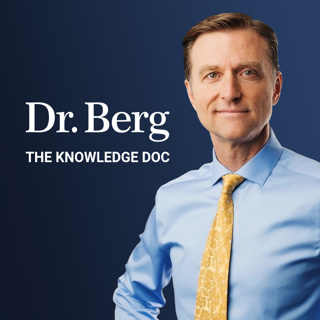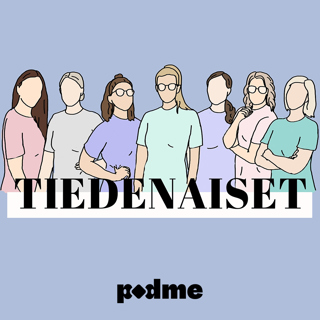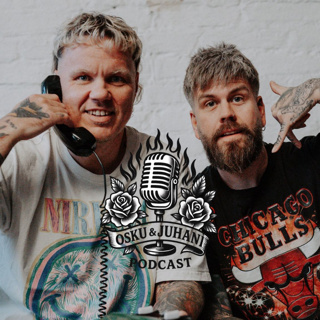
Sardines vs Cod Liver: Which is Better for You?
We’re going to talk about the health benefits of cod liver and sardines. Sardines are excellent for your health and a great source of omega-3s, but so is cod liver! You should consume both foods because they each have their own strengths. Cod liver and sardines contain omega-3 fatty acids, EPA and DHA. EPA helps reduce inflammation, while DHA supports the brain, nerves, and heart. Sardines contain .9 to 2 grams of omega-3 fatty acids per serving while cod liver contains 9 to 11 grams per serving. Cod liver also contains significantly more vitamin D. Sardines and cod liver contain vitamin A in its active form, retinol. Vitamin A supports vision, vision at night, and the inner mucosal membranes of your mouth, throat, sinuses, and lungs. It’s also important for your thyroid. Sardines contain 32 mcg of vitamin A, and cod liver contains 5100 mcg! Cod liver does not surpass sardines in all aspects. Sardines are a better source of protein. Cod liver is a rich source of folate at 300 mcg, while sardines only contain 10 mcg. Sardines contain 392 mg of calcium and 545 mg of phosphorus and cod liver contains 10 mg and 100 mg respectively. Cod liver and sardines contain about the same amount of B12 at 10.6 mcg and 11 mcg respectively. When comparing sardines to salmon, both fish contain B vitamins, but sardines are a better source of calcium, phosphorus, selenium, iron, magnesium, and zinc.
18 Helmi 20244min

Preserving Your Muscles as You Age
In this podcast, we’re going to talk about preventing muscle loss due to aging. At around age 50, women go through menopause which causes hormonal changes. Men experience hormonal changes around age 60. As you age and your hormones change, you can become deficient in skeletal muscle. This is known as sarcopenia. Around 40% of your metabolism is related to your muscles, so this can have detrimental effects. In women, estrogen decreases with age, but progesterone drops even lower. Without progesterone, you end up with a lot of problems from estrogen. Cholesterol is a building block for steroid hormones, like testosterone and estrogen, which directly affect your muscles. This is why low-cholesterol and low-fat diets can cause muscle loss. Coincidentally, this is why you see muscle damage and diseases associated with statin drugs. Here are 6 ways to protect and support your hormones to help prevent muscle loss as you age: 1. Infrared light can increase melatonin. Sunlight, fire, and candles all provide infrared light. 2. Regular, consistent, resistance exercise is the most potent stimulator of muscle building. 3. Ensure adequate intake of high-quality animal protein. Aim for .8 to 1.2 grams of protein per kilogram of body weight each day. 4. Consume plenty of cholesterol from meat and dairy. 5. Try pregnenolone supplements. Start out with 30 mg per day for women and 100 mg for men. Pregnenolone is a precursor for important hormones related to muscle building. 6. DHEA is a precursor for hormones that help build muscle. Try 25 mg for women and 100 mg for men. DATA: https://pubmed.ncbi.nlm.nih.gov/6122168/ https://www.frontiersin.org/articles/...
17 Helmi 20249min

Your Supplements Are a Lie… Really
Are multivitamins and other health supplements good for you? In this podcast, we’re going to talk about vitamins and supplements. Sometimes, health supplements are discredited because they’re not regulated by the FDA the same way as pharmaceuticals, but it's important to understand the relationship between the FDA and pharmaceutical companies. People often become employees of the FDA to secure a much higher-paying career at a pharmaceutical company. This plays a major role in the approval of drugs. Many drugs are approved without enough evidence of safety. Overall, supplements are generally recognized as safe. In 1989, a dozen people allegedly died from taking L-tryptophan. L-tryptophan is an amino acid that helps you sleep, has an anti-depressive factor, and curbs cravings. The problem arose from a contaminated batch of L-tryptophan that was made using genetically modified bacteria. There was a recall, and the FDA banned the supplement for 16 years. Synthetic vitamins are much cheaper than natural vitamins but do not have the same effects on the body. Around ⅔ of vitamins come from raw materials made in China, all of which are synthetic, industrially-made compounds. There are several reasons why we need vitamins and supplements and why some people need them more than others. The following factors will increase the need for vitamins and supplements: • Food is grown in poor soils or hydroponically • Genetics • Chronic inflammation • Frequent exercise • Seed oil consumption • Grain consumption • Veganism • Fasting We have a very high need for some vitamins and minerals that require a large consumption of certain foods to achieve adequate intake. For example, you need 4700 mg of potassium each day. Some deficiencies can be dangerous. Deficiencies in folate can mimic the same damage to your DNA as radiation. DATA: https://www.nemsn.org/Articles/truth_... https://go.gale.com/ps/i.do?id=GALE%7... https://www.spglobal.com/commodityins... https://pubmed.ncbi.nlm.nih.gov/24088...
16 Helmi 202414min

We Need to Eat Bugs & Insects to Save the Planet
Are insects the sustainable food source of the future? In this podcast, we’re going to take a look at edible bugs as an alternative protein source. Some say that we should be eating bugs by 2050 because of the growing population. Some blame climate change or claim that beef is not sustainable and that we need to find other sources of food. One hundred grams of bugs contains about 12 grams of protein, 5 grams of fat, and 5 grams of carbs. If we were to eat insects as food, we’d need to eat 4x to 8x this amount to get enough protein! It could become quite expensive to consume this many bugs each day. The cost of edible insects could be lowered by lowering the quality of what they’re fed, but then the bugs will be less nutritious with less protein. Eating insects would also require people to give up their cultural and traditional foods which is not likely. When you compare bugs to beef, insects do not come close in terms of protein or nutritional value. Insects also carry pathogens. A 2019 study evaluated several cricket farms that were developing edible insects. Around 81% of the crickets had parasites and 30% were potentially pathogenic. There's also a higher incidence of worms, viruses, bacteria, and fungus in crickets. If you have an allergy to shellfish, you may also have an allergy to edible insects because they contain a similar protein. Bugs have an exoskeleton mainly composed of chitin which is an antinutrient and can not be digested by our microbiome. Chitin also blocks vitamins A and E.
15 Helmi 20244min

What Would Happen If You Ate Plant-Based Meat for 2 Weeks
In this podcast, we’re going to talk about plant-based meat. Plant-based meat is marketed as clean meat. People are gravitating to these fake meats because of claims that real meat causes cancer and other chronic diseases. The studies that were used to draw these conclusions were food questionnaires and observational studies. Out of 800 studies on the topic, researchers claiming that meat was bad only focused on 17. An evaluation of the studies linking red meat to cancer by the Annals of Internal Medicine concluded that the evidence linking red meat consumption to cancer and cardiovascular disease is too weak to recommend that we eat less of it. New guidelines say we don't need to change our meat habits. No significant link between meat consumption and heart disease, diabetes, or cancer has been found. Plant-based meat is full of ultra-processed ingredients like seed oils, soy, modified food starches, and GMO ingredients. Claims that plant-based meat is identical to real meat are completely false. Metabolomic studies have shown key differences in 171 out of 190 compounds in fake meat compared to real meat.
14 Helmi 20245min

How to Get Enough Potassium on the Carnivore Diet
In this podcast, we’re going to talk about potassium on the carnivore diet. You need 4700 mg of potassium each day, more than any other mineral. Potassium is important for the sodium-potassium pump present in all of your cells, which allows the contraction and relaxation of your nerves. Too much potassium is known as hyperkalemia, and too little is known as hypokalemia. Symptoms of high potassium include diarrhea, muscle pain, and muscle numbness. Symptoms of low potassium include constipation, muscle cramps, and fatigue. Potassium is vital for exercise performance. If you don’t have enough, you’ll probably feel weak or tired. One of the causes of low potassium is low magnesium. Kidney disease can cause high potassium. If the kidney is not functioning properly, it won’t be able to get rid of potassium. It’s very rare to develop too much potassium in the blood from dietary intake. Blood pressure medications or side effects of an adrenal condition known as Addison's can also cause high potassium. Diuretics and steroids can cause low potassium. Surgeries and injuries can also cause low potassium. The following vegetables are some of the best sources of potassium: •1 cup of beet leaves 1300 mg •1 cup of Swiss chard 900 mg •1 cup spinach 840 mg •1 avocado 500-700 mg •1 cup of beets 520 mg •1 cup of salad 350-500 mg Bananas contain around 300 mg of potassium but have too much sugar. Here are some of the best sources of potassium on the carnivore diet: •1 cup of bone broth 500 mg •3 ½ oz beef 350 mg •3 ½ oz octopus 650 mg •3 oz salmon 300 mg •1 large egg 63 mg •3 oz beef liver 125 mg •3 oz chicken 300 mg
13 Helmi 20245min

The 10 Root Causes of Inflammation
In this podcast, we’re going to look at the root causes of inflammation and the best natural remedies for inflammation. Here are 10 common causes of inflammation. 1. Gluten consumption and food allergies Gluten can lead to a leaky gut, a condition where food particles leak through the small intestine. Leaky gut is one of the most common causes of inflammation. Pinpointing a food allergy can also help clear up gut inflammation. 2. Ultra-processed food ingredients Ultra-processed foods like synthetic sugars, modified food starches, and seed oils go through several industrial processes to the point that they no longer resemble their original form. These foods cause free-radical damage and inflammation in the body. 3. Viruses Viruses can go in and out of remission, causing inflammatory conditions that come and go. This is often triggered by stress which increases your cortisol levels, suppressing your immune system. Viruses can also block vitamin D. 4. Insulin resistance Frequent eating and carb consumption leads to insulin resistance. Most of the population is insulin-resistant. 5. Lack of cortisol Chronic stress over a long period and medications like Prednisone can lead to cortisol resistance. 6. Old injuries Lack of movement and a sedentary lifestyle can lead to inflammation. 7. Sludge in bile ducts Without adequate bile salts, bile sludge can back up into the liver causing right shoulder pain and rhomboid pain. This can be corrected by a healthy diet. 8. Too much iron This is typically caused by a genetic issue and is more common in men. 9. Hypoxia Conditions like COPD, cirrhosis of the liver, clogged arteries, and sleep apnea can cause hypoxia—a lack of oxygen. 10. Uric acid Uric acid is one of the most common causes of high blood pressure and comes from high fructose consumption. Here are the best remedies for inflammation: •Kefir, sauerkraut, kimchi, or a probiotic •Vitamin D3 •Intermittent fasting and periodic prolonged fasting •Cruciferous vegetables and salads •Keto diet •Carnivore diet •TUDCA •Tocotrienols •Cold therapy •Stretching and exercise •Omega-3 fatty acids (cod liver oil, sardines, salmon)
12 Helmi 202411min

7 Ways to Raise Your ENERGY Big-Time
In this podcast, I’m going to tell you how to have more energy every day without using stimulants like coffee or energy drinks! Coffee doesn't give you energy. It gets rid of the fatigue molecule so that you don’t feel tired. Glucose and sugar might seem to give you an energy boost, but they actually make you tired! Here are 7 ways to raise your energy levels naturally without a crash. 1. Magnesium Magnesium is a cofactor to make ATP, which is like the battery source for the body. The #1 symptom of low magnesium is fatigue. Magnesium-rich foods include spinach, almonds, avocado, and fish. 2. Sodium-potassium pump The sodium-potassium pump in your cells allows you to generate an electrical charge that powers your muscles and your nervous system. Adequate sodium and potassium intake is crucial for healthy energy levels. Electrolyte powder can help if you’re not consuming enough sodium and potassium from your diet. 3. Mitochondrial biogenesis Creating more mitochondria through consistent exercise can boost energy levels. Fasting, intermittent fasting, cold therapy, and polyphenols can also increase mitochondria. Polyphenols are found in certain vegetables, herbs, berries, and dark chocolate. 4. Ketones If you follow a keto diet, you can get your body running on ketones. Ketones produce more energy than glucose. 5. Carnitine Carnitine is a compound that can help transport fat into the mitochondria. Carnitine helps increase exercise endurance, delays the fatigue factor, and acts as an antioxidant to decrease damage in the muscles. Red meat is the best source of carnitine. 6. Apple cider vinegar Apple cider vinegar can be used by the mitochondria as fuel. Add one tablespoon to a glass of water each day. 7. B vitamins B vitamins are intimately involved with every part of your mitochondria that generates ATP from your food. Nutritional yeast is one of the best sources of B vitamins.
11 Helmi 20245min





















